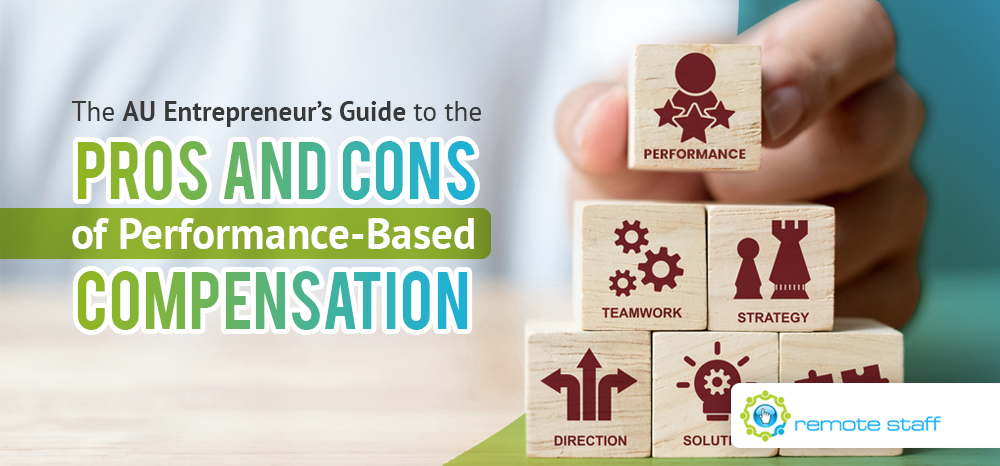Performance recognition is hardly an alien concept. Competition is ever-present at school, sports, and in the workplace. Done right, performance-based recognition rewards those who work hard and inspires the rest to step up.
Having a team of excellent and driven people is invaluable. Motivated staff go above and beyond to achieve results and this contributes greatly to company growth.
It’s therefore important to cultivate an environment that simultaneously challenges where employees and compensates them for rising to such. Most companies implement a fixed salary package while others provide hourly pay, but there’s another compensation style worth considering.
I’m referring to performance-based compensation. It’s quite simple. The more productive you are, the more rewards you get. It sounds straightforward enough, but it’s not as black and white as it seems.
So, if you’re an employer and are considering implementing performance-based compensation, it helps to evaluate the pros and cons. It helps to analyse factors like evaluation metrics, reward packages, and job classification as well.
Advantages
Recognising your employees’ hard work can boost their morale. However, words of encouragement can only go so far. This is where monetary incentives come in.
Identify opportunities and areas of improvement.

A performance-based pay structure can help identify employees who are excelling as well as those who need assistance. You can then reward employees who are doing great with monetary rewards, while providing those who are struggling with additional training.
Increase retention

Competitive individuals also tend to stay longer if they’re given opportunities for growth and are well-compensated for their hard work. You might pay more at the onset but you can reduce overhead costs in the long run. After all, you wouldn’t have to train and onboard people so frequently if you can hang on to your best talent.
Potential for fine-tuning recruitment practices

Speaking of onboarding, following a performance-based pay model can help you arrive at the right criteria for hiring. Observe your high-key performers, and then find applicants that display similar values, skills, and levels of commitment. Chances are, they too will find a performance-based compensation program a huge incentive to perform well and to stay on.
Performance-based compensation has plenty of benefits. However, your employees should be rated fairly for it to work. Thus, it helps to have performance appraisals monthly, quarterly, or annually, depending on the need.
Disadvantages
Compensation isn’t a one-size-fits-all approach. Performance-based pay sounds, but some employers legitimate reasons for being wary of it.
Higher risk for stress and burnout

While it’s true that rewarding employees based on their performance can boost productivity, studies show that it’s more likely to lead to stress and burnout. In fact, according to a study conducted by the Harvard Business School, not everyone responds well to incentive-based compensation. A lot of people still prefer the security and leeway that comes with fixed pay.
Tendency to create a rift or gap between employees

A little healthy competition is good, but too much of it can negatively affect your company’s working environment. You want your staff to collaborate with and inspire each other, not to plot against each other while gunning for the top spot. Such a scenario can easily escalate and bring about a toxic work environment for everyone.
Heavy reliance on accurate and appropriate measures

A performance-based compensation program lives and dies by the accuracy of its KPI’s. You might end up rewarding employees who delivered a great quantity of work, but sans the minimum quality standards. Since there’s pressure to deliver quickly, this is a real possibility. Thus, it’s important to assess and double check your performance metrics when implementing a performance based-compensation program.
At the end of the day, it’s important to make your staff or remote workers feel validated and valued. Whether you opt to pay them daily, hourly, or according to their performance, don’t forget to consider their job category and length of service. You should also factor in your company goals and the said employee’s compensation type.
Given all these scenarios, you might have ideas on the sort of compensation you’d like to implement. But in case you don’t know where to begin, we can assist you. Remote Staff has been helping Australian SMEs and entrepreneurs like you hire, retain, and reward skilled remote workers from the Philippines for more than 10 years and counting.
Call us or schedule a call back to find the best compensation package for your team.
Serena has been working remotely and writing content for the better part of the last decade. To date, she's written for Pepper.ph and Mabuhay Magazine, among others, and has churned out more than a thousand articles on everything from The Basics of Stock Market Investing to How to Make Milk Tea-Flavored Taho at home.





















